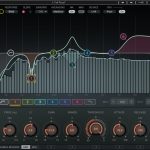
FX Returns & VCA/DCA’s
In my travels, I see a lot of confusion surrounding DCA’s and VCA’s especially when it comes to handling FX returns.
VCA’s or DCA’s or Control Groups or whatever esoteric proprietary name your chosen console manufacturer has decided to use DO NOT pass any audio.
Let me say that one more time for clarity: VCA’s/DCA’s/etc. DO NOT pass any audio.
They’re remote controls for faders. They’re just a way to control a bunch of faders at one time.
When it comes to FX, I believe the best way to feed your FX is to use a POST-FADER variable send from the input. These are usually called Aux Sends unless, again, your console manufacturer thought it would be cute to call it something different.
Side note: Manufacturers, you are not doing ANYONE any favors when you give things a term that is different from the industry standards already in use for decades. You just make it harder for engineers to learn your gear. AND as someone who spends a lot of time educating engineers at a variety of levels, you make things even more confusing for the beginners and intermediate ones who are simply trying to understand concepts. But I digress….
So the Aux send feeds into the FX unit/plug-in/internal FX, and then it RETURNS to an input or a dedicated FX Return.
I see a lot of engineers assign those FX Returns along with the input feeding the FX to the same VCA, but you don’t need to do this. In fact, I believe you shouldn’t do this and it’s a bad idea.
Here’s an example. Let’s say we have a snare drum feeding a drum reverb and we assign that snare drum and the drum reverb return to a VCA we call “Drums”. In the midst of our event, we oddly feel all the drums are too loud so we pull down the Drums VCA. Pulling the VCA down is a great way to handle this, but we’re not just turning down the drums in this case. We’re also turning down the balance between the FX and the drums.
Confused, yet?
Our reverb, in this case, is being fed POST-FADER from our snare. So anytime we adjust the snare fader, we will also adjust the amount of reverb on the snare in the mix because the send to the reverb follows our fader move. That’s why it’s called “post” fader. It means everything our fader does also affects that send level. So, adjusting the snare fader in this case adjusts the snare input AND the send to the FX.
When we turn down our Drum VCA, we are in effect turning down the Snare fader because the VCA is, again, a remote control for the faders of anything we assign to it. We may not see this behavior reflected visually on the surface of our console, but that is effectively what is happening behind the scenes.
Now, when our drum reverb and drum inputs are assigned to the same VCA, turning down the drum VCA effectively turns down the drum inputs, the sends to the FX, AND the FX returns. So, in this scenario, if we turn down the drums with the VCA, we will make the drums quieter AND drier at the same time because the balance between our FX and our input will change. The amount of drums going to the reverb will be turned down AND the reverb return level will be turned down. If we turn the drums up, we’ll do the opposite and make the drums wetter because we’ll both send more level to our reverb while turning up the reverb return.
So do yourself a favor and stop assigning your FX returns to the same VCA’s as your input faders.
I hope this makes sense. If not, leave me a comment and perhaps I can make a quick video that will demonstrate this.

 Previous Post
Previous Post Next Post
Next Post



Very clear article! I like that LV1 displays a ‘ghost’ fader for each fader that shows the real setting after DCA’s are applied.
Some consoles show a “ghost fader” or some indicator that the channel is assigned to a DCA/VCA – maybe a video showing the results of what you’re describing on those “ghost faders” would be extra descriptive? Just an idea.